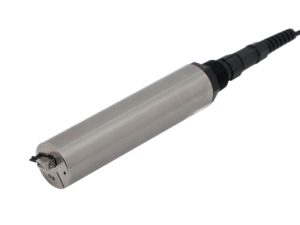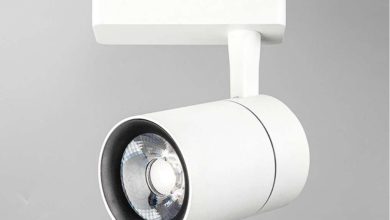Understanding Turbidity Sensors: Key to Monitoring Water Clarity and Quality

Water is one of the most vital resources on Earth, and its quality plays a crucial role in sustaining both human life and ecosystems. Whether it’s in drinking water systems, wastewater treatment plants, environmental monitoring, or industrial processes, the clarity and quality of water are essential indicators of its safety and purity. One of the key factors used to assess water quality is its turbidity.
Turbidity refers to the cloudiness or haziness of a fluid caused by the presence of suspended particles, such as dirt, algae, silt, and other contaminants. These particles can affect the water’s appearance, but more importantly, they can impact the health of aquatic life and the safety of drinking water. turbidity sensor are devices used to measure the concentration of suspended particles in water, providing valuable data that can help determine water quality. In this article, we will explore what turbidity sensors are, how they work, and why they are so important for monitoring water clarity and quality.
What is Turbidity?
Before delving into the details of turbidity sensors, it’s essential to understand what turbidity is and why it matters.
Turbidity is a physical measurement of how clear or cloudy water is. The clarity of water is determined by the amount of light that can pass through it. When suspended particles such as dirt, algae, or microorganisms are present in the water, they scatter light, making the water appear cloudy. The higher the concentration of particles, the greater the turbidity.
The level of turbidity is measured in Nephelometric Turbidity Units (NTU), which quantifies how much light is scattered by particles in the water. The higher the NTU, the more turbid the water is. In many water quality standards, drinking water is considered safe if the turbidity level is less than 1 NTU, and natural waters like rivers and lakes may range from 0.1 to 50 NTU, depending on factors such as location and weather.
High turbidity can be caused by a variety of factors, including:
-
Pollution: Industrial or agricultural runoff often contains suspended particles that can increase turbidity.
-
Stormwater Runoff: Heavy rains can wash dirt, sediment, and other debris into water bodies, increasing turbidity.
-
Algal Blooms: High concentrations of algae in water can cause turbidity levels to rise, affecting both water quality and aquatic ecosystems.
-
Soil Erosion: In areas with poor soil management, erosion can lead to sediment-laden water, contributing to turbidity.
Monitoring turbidity is important because suspended particles in the water can interfere with the effectiveness of water treatment processes, harm aquatic life by reducing oxygen levels, and increase the risk of waterborne diseases.
What Are Turbidity Sensors?
turbidity sensor are instruments designed to measure the level of suspended particles in water. These sensors are used in various industries, including water treatment, environmental monitoring, and aquaculture, to ensure that the water meets quality standards. They are especially useful in detecting pollution and tracking changes in water quality in real-time.
There are different types of turbidity sensors, but they all function based on the principle of light scattering. The most common types of turbidity sensors are:
1. Nephelometric Turbidity Sensors (NTU Sensors)
Nephelometric turbidity sensors measure the scattered light at a 90-degree angle from the light source. This type of sensor is the most widely used and is commonly found in water treatment plants and environmental monitoring systems. It measures the intensity of the scattered light and converts it into an NTU reading. The greater the intensity of scattered light, the higher the turbidity.
2. Absorption-Based Turbidity Sensors
Absorption-based turbidity sensors measure the amount of light that is absorbed by the particles in the water. This type of sensor is less commonly used than nephelometric sensors, but it can be effective in some specialized applications. Absorption sensors are generally used in low turbidity measurements and environments where light scattering may not be the most reliable indicator.
3. Laser Turbidity Sensors
Laser turbidity sensors use a laser light source to measure suspended particles in water. The light from the laser scatters when it encounters particles, and the sensor detects the scattered light. Laser-based sensors are highly sensitive and are often used in research or in applications where precise measurements of very low turbidity levels are needed.
How Do Turbidity Sensors Work?
Turbidity sensors generally operate on the principle of light scattering. Here’s how they work in more detail:
-
Light Emission: The sensor emits light into the water. This light can come from an LED or a laser light source, depending on the sensor type.
-
Interaction with Particles: When the light enters the water, it interacts with suspended particles. These particles scatter the light in various directions. The amount and angle of scattering depend on the size, concentration, and type of particles in the water.
-
Detection of Scattered Light: The sensor detects the scattered light using photodetectors. In a nephelometric turbidity sensor, the light is typically detected at a 90-degree angle to the incident light, which allows for accurate measurements of turbidity. The photodetector converts the amount of scattered light into an electrical signal.
-
Calculation of Turbidity: The electrical signal is then processed by the sensor’s internal electronics, which calculate the level of turbidity based on the intensity of the scattered light. This value is usually expressed in NTU or Formazin Turbidity Units (FTU), which are common measurement units for turbidity.
Why Are Turbidity Sensors Important?
Turbidity sensors play a critical role in monitoring water quality across various sectors. Here are some of the reasons why these sensors are so essential:
1. Water Quality Monitoring
In environmental monitoring, turbidity sensors provide real-time data on water quality. For example, they can be used to track changes in the turbidity of rivers, lakes, or coastal waters. High turbidity levels may indicate pollution from industrial discharges, agricultural runoff, or algal blooms. By continuously monitoring turbidity, environmental agencies can identify potential contamination events and take action to mitigate their impact.
2. Drinking Water Safety
In drinking water treatment plants, turbidity sensors are used to ensure that the water being treated is free of contaminants. High turbidity in raw water can interfere with disinfection processes, such as chlorination, and can protect harmful microorganisms from being eliminated. Turbidity sensors help ensure that treated water meets safety standards before being supplied to consumers.
3. Wastewater Treatment
Wastewater treatment plants use turbidity sensors to monitor the effectiveness of treatment processes. After primary and secondary treatment, the water is typically filtered to remove suspended particles. Turbidity sensors can measure the effectiveness of these filtration systems and ensure that the treated water meets environmental discharge standards before being released back into rivers or oceans.
4. Aquaculture and Fisheries Management
In aquaculture, maintaining water quality is crucial for the health of farmed fish. High turbidity levels can lead to oxygen depletion, stress the aquatic species, and increase the risk of disease. Turbidity sensors help aquaculture operators monitor water clarity and adjust conditions to promote the health and growth of aquatic organisms.
5. Industrial Processes
In industries such as food and beverage manufacturing, pharmaceuticals, and textiles, water is often used in processes that require high-quality standards. Turbidity sensors can monitor the quality of water used in these processes, ensuring that contaminants are kept to a minimum. Additionally, sensors can be used to monitor effluent water to ensure compliance with discharge regulations.
The Benefits of Turbidity Sensors
-
Real-Time Monitoring: Turbidity sensors provide continuous, real-time data on water quality, allowing for immediate detection of changes in turbidity.
-
Accuracy: These sensors offer accurate measurements, which are crucial for assessing the safety and quality of water in various applications.
-
Cost-Effective: Using turbidity sensors is a cost-effective way to monitor water quality, as they reduce the need for manual testing and provide more comprehensive data.
-
Compliance: Turbidity sensors help industries and municipalities ensure that their water quality meets regulatory standards, avoiding fines and penalties.
Conclusion
Turbidity sensors are essential tools in modern water quality monitoring, providing real-time, accurate data on the clarity of water. Whether used in environmental monitoring, drinking water treatment, industrial processes, or aquaculture, turbidity sensors help ensure that water meets quality standards and is safe for both human use and ecological health. As technology continues to evolve, turbidity sensors will become even more advanced, offering higher sensitivity, greater reliability, and broader applications, all of which will contribute to more efficient and sustainable water management practices worldwide.








